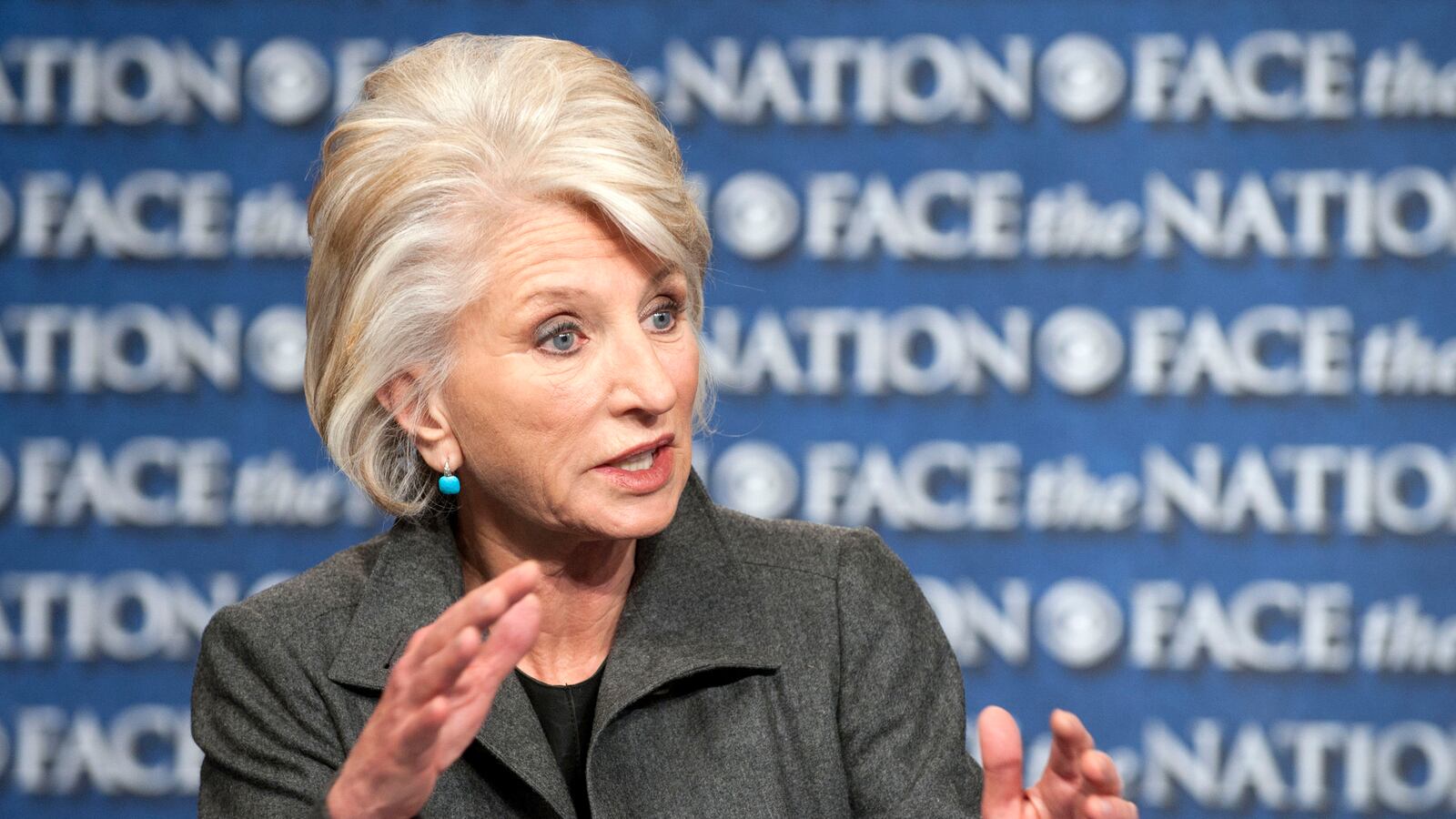It was back in 2008 when Ellen Laipson—president of the Stimson Center, a public policy institute in Washington, D.C., focused on international security—says it dawned on her how much the world was changing for women and national security.

Laipson was in Riyadh to moderate a foreign policy panel with the Saudi foreign minister, Prince Turki. “Even the Saudis recognized years ago that women are part of the American foreign policy scene,” she says.
But ask Laipson, who often speaks overseas, how many times she has appeared on network Sunday talk shows in the United States in the past year, and the answer is: ZERO.
The under-representation of female national security experts in the media is something other women notice. “Despite the many women in senior positions, we’ve all been to conference after conference where 80 percent of the panelists are men—and the same goes for the major cable TV shows, which tend to feature far more male experts,” says Rosa Brooks, a Georgetown Law professor and columnist for Foreign Policy.
“If you are not at the tippy top of the class you often get overlooked by American media,” laments Tamara Wittes of The Brookings Institution. “Editors and producers say they are looking for more women experts but can’t seem to find them.”
The problem is not a lack of women in national security. According to 2013 research by the University of Pennsylvania’s Global GO TO Think Tank Annual Index, close to one-third of major U.S. think tanks covering foreign affairs, national security and defense, have women at the top of the organization. Jane Harman took over The Wilson Center in February 2011, followed by Neera Tandem as head of the Center for American Progress in October of that year. The International Crisis Group’s president is Louise Arbor. Karen Donfried is the new president and CEO of The German Marshall Fund. Three former Secretaries of State have been women.
Yet the percentage of women appearing on the six network and cable Sunday shows has remained flat for five years, according to Media Matters for America, a progressive-leaning survey organization which found in 2013 that women made up 25 percent of total guests and accounted for 15 percent of solo interviews. The top 10 list of solo interviews is comprised of all men.
So what explains the lack of parity?
1. Women often turn down invitations to appear on shows:
“If we want to see more women in leadership roles in tanks, we need to encourage younger female experts to shed their reticence and speak up—and then speak up again more loudly when one of the boys interrupts them,” argues Wittes. "It’s not always the case, but women are often more reluctant than men to claim and own their expertise on a particular subject,” says Lauren Bohn, a multimedia journalist based in Istanbul, who has started Foreign Policy Interrupted, a media site for female experts.
2. Family demand trump visibility
Another obstacle for women is still juggling kids and work. As Wittes notes, “There are notable exceptions on both sides, of course, but the average woman is less able than the average man to jet off to a conference on short notice or drop everything to head over to the television studio.”
3. Media Laziness
The truth is that often bookers of television shows simply rely on their old lists—male-dominated lists. “Women in all fields face a higher bar to be taken seriously as experts,” says NBC News correspondent Andrea Mitchell, who has covered the State Department for the past 20 years. “Those of us in the media need to make a point of finding women guests,” which Mitchell does.
At the end of the day, the best way to close the media gap for women will come from collective action. Women need to know that their peers are pushing for them and cheering them on—recommending each other and demanding airtime.
Leaning In does not have to mean leaning alone. If women press the case for media parity together, they can change the balance sheet. That means speaking up and speaking out to insist on full representation. After all, we should be able to compete with the Saudis or any other country when it comes to women.
Women At The Top:
Anne-Marie Slaughter, New America Foundation
Jane Harman, the Wilson Center
Ellen Laipson, The Stimson Center
Jessica Matthews, Carnegie Endowment for International Peace
Wendy Chamberlin, Middle East Institute
Josette Sheeran, Asia Society
Neera Tanden, Center for American Progress
Kathy Calvin, United Nations Foundation
Michele Flournoy, Center For A New American Security
Tara D. Sonenshine is former Under Secretary of State for Public Diplomacy and Public Affairs and Distinguished Fellow at George Washington University’s School of Media and Public Affairs. She is former editorial producer of ABC NEWS Nightline and former contributing editor at Newsweek magazine.






